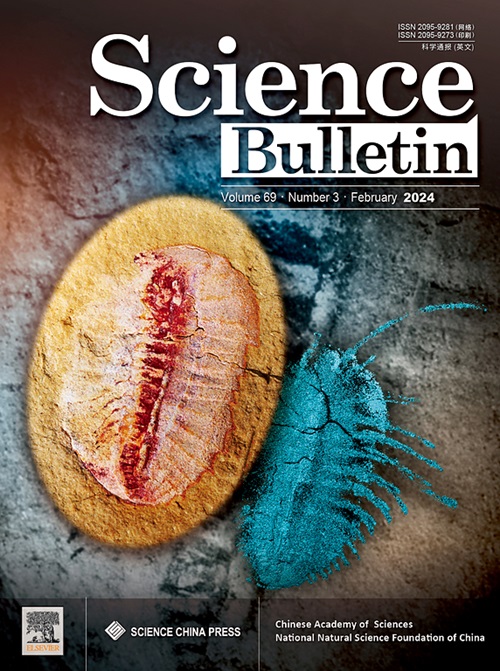Accelerated warming of High Mountain Asia predicted at multiple years ahead
IF 18.8
1区 综合性期刊
Q1 MULTIDISCIPLINARY SCIENCES
引用次数: 0
Abstract
High-Mountain Asia (HMA) is an important source of freshwater since it holds the largest reservoir of frozen water outside the polar regions. HMA feeds ten great rivers, ultimately supporting more than 2 billion people. However, the threat of accelerated glacier melt, which is a consequence of unprecedented global warming since the early 1950s, threatens water resources in the surrounding countries. Accurate predictions of the near-term temperature change and synergistic mass loss of glaciers are essential but challenging to implement because of the impacts of internal climate variability. Here, based on large ensembles of state-of-the-art decadal climate prediction experiments, we provide evidence that the internally generated surface air temperature variations in HMA can be predicted multiple years in advance, and the model initialization has robust added value to the decadal prediction skill. Real-time decadal forecasts suggest that the HMA will experience accelerated warming in 2025–2032, where the surface warming will increase by 0.98 °C (0.67 to 1.33 °C; 5% to 95% range) relative to the reference period 1991–2020, which is equivalent to 1.75 times the observed warming during 2016–2023. The decadal predictability originates from extratropical Pacific decadal variability modes, which modulate the convective heating in the tropical Pacific and influence HMA via the eastward-propagating atmospheric Kelvin waves. Accelerated warming in the coming decade will likely increase the shrinkage of the glacier volume over the HMA by 1.4%. This change poses unprecedented challenges, including potential water scarcity, ecosystem disruption, and increased risk of natural disasters, to HMA and surrounding regions.
预计未来多年亚洲高山地区将加速变暖。
亚洲高山地区(HMA)是淡水的重要来源,因为它拥有极地地区以外最大的冰冻水库。亚洲高山地区哺育了十条大河,最终养活了 20 多亿人口。然而,自 20 世纪 50 年代初以来前所未有的全球变暖导致冰川加速融化,威胁着周边国家的水资源。准确预测近期的温度变化和冰川的协同质量损失至关重要,但由于内部气候变异性的影响,实施起来具有挑战性。在此,我们基于最先进的十年期气候预测实验的大型集合,提供证据表明,可以提前多年预测高纬度地区内部产生的地表气温变化,而且模型初始化对十年期预测技能具有强大的附加值。十年期实时预报表明,2025-2032 年,哈马河流域将经历加速变暖,地表升温幅度将比 1991-2020 年期间增加 0.98 ℃(0.67-1.33 ℃;5%-95%),相当于 2016-2023 年期间观测到的升温幅度的 1.75 倍。这种十年期可预测性源于太平洋外热带十年期变率模式,它调节热带太平洋的对流加热,并通过向东传播的大气开尔文波影响高纬度地区。未来十年加速变暖可能会使高纬度地区的冰川体积缩小 1.4%。这种变化给哈马河流域及周边地区带来了前所未有的挑战,包括潜在的水资源短缺、生态系统破坏和自然灾害风险增加。
本文章由计算机程序翻译,如有差异,请以英文原文为准。
求助全文
约1分钟内获得全文
求助全文
来源期刊

Science Bulletin
MULTIDISCIPLINARY SCIENCES-
CiteScore
24.60
自引率
2.10%
发文量
8092
期刊介绍:
Science Bulletin (Sci. Bull., formerly known as Chinese Science Bulletin) is a multidisciplinary academic journal supervised by the Chinese Academy of Sciences (CAS) and co-sponsored by the CAS and the National Natural Science Foundation of China (NSFC). Sci. Bull. is a semi-monthly international journal publishing high-caliber peer-reviewed research on a broad range of natural sciences and high-tech fields on the basis of its originality, scientific significance and whether it is of general interest. In addition, we are committed to serving the scientific community with immediate, authoritative news and valuable insights into upcoming trends around the globe.
 求助内容:
求助内容: 应助结果提醒方式:
应助结果提醒方式:


